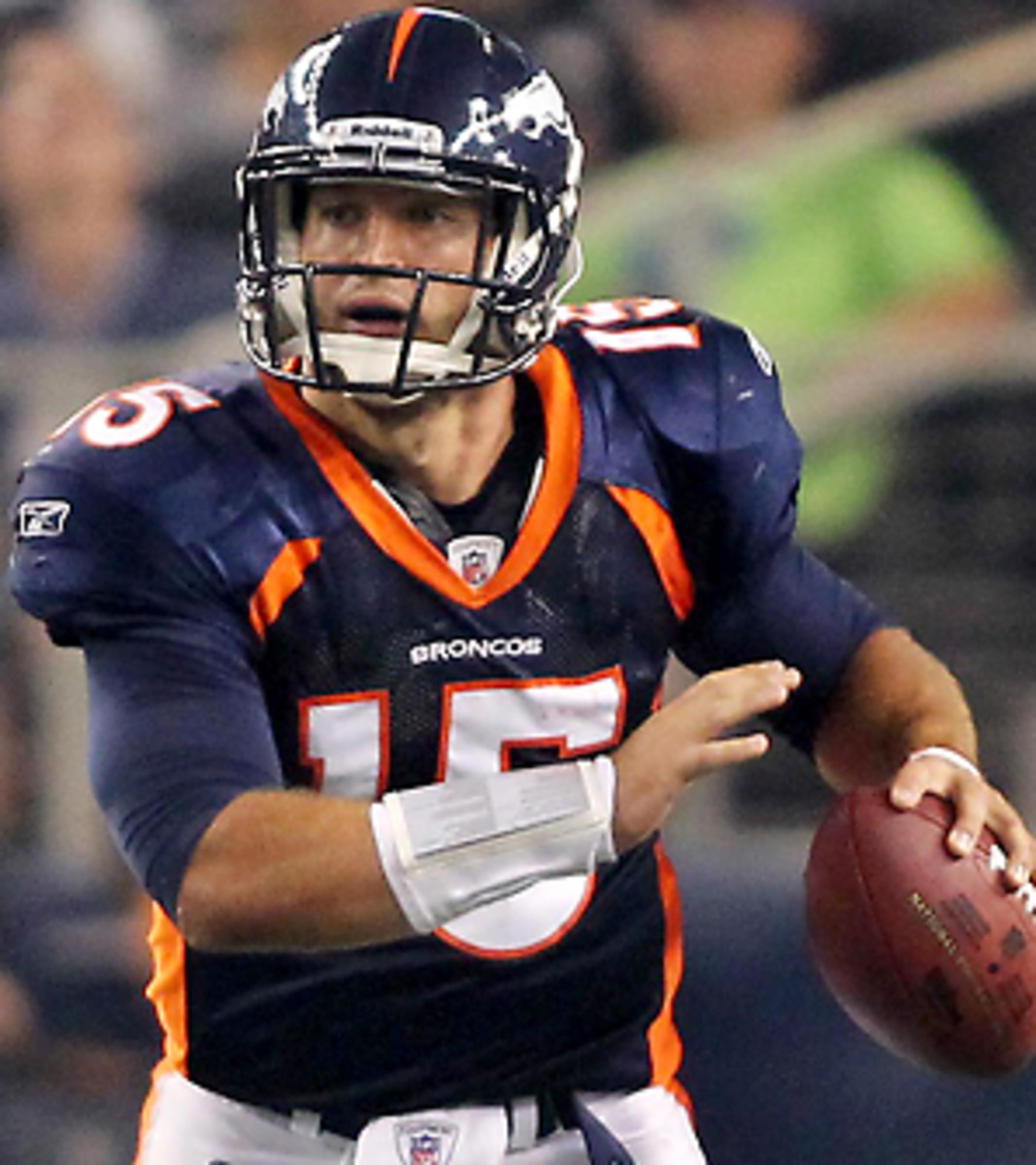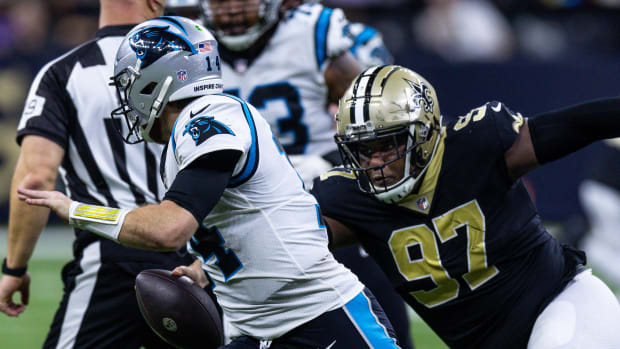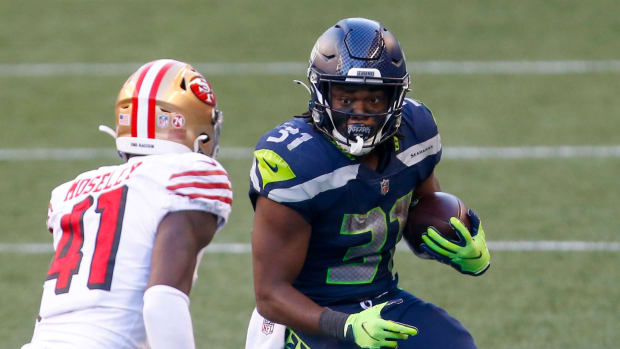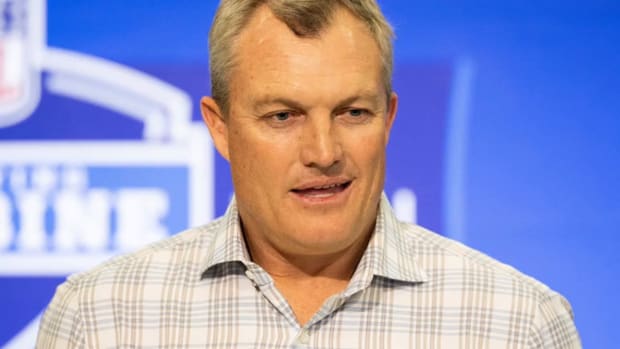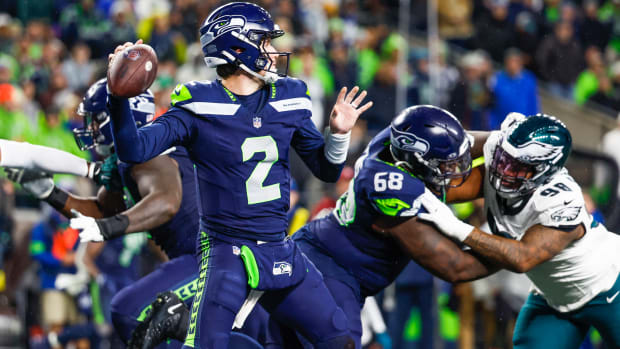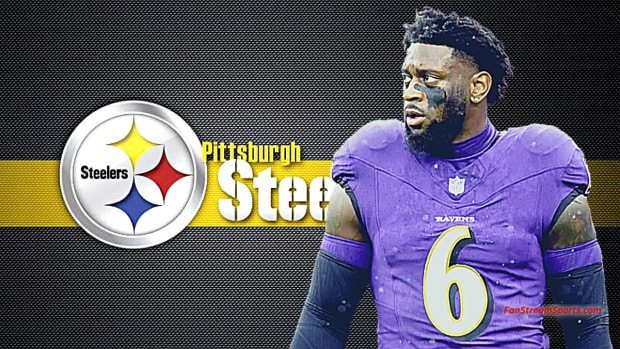Offseason Breakdown: New York Jets
Can Tim Tebow pick up the slack in the Jets' backfield? (Getty Images)
With NFL training camps just around the corner, we’re taking a team-by-team look at how the offseason played out and what you can expect in 2012. Click here to read them all.
Even when outnumbered by healthy cells, cancer finds a way to grow. Such was the case of the 2011 Jets.
Rex Ryan's crew entered last season with high expectations, coming off consecutive AFC title game appearances. But something happened along the way to taking that next step. Long-simmering skepticism about Mark Sanchez's ability and ceiling came to a boil within Sanchez's own offensive huddle, thanks to a pouty receiver group led by Santonio Holmes and Plaxico Burress (Derrick Mason added to the drama early, but the team was smart enough to trade him after just five games of discontent; unfortunately they couldn't trade the top half of the receiver depth chart all at once). That led to dysfunction in the passing game, which caused more doubt, within the team and outside of it, about Sanchez and offensive coordinator Brian Schottenheimer.
Pair that with an ineffective ground game, and a defense that was still very good, albeit a step back from its dominant past self, and it's easy to see how the Jets ended up at 8-8. Gone are Burress and Schottenheimer, along with Rex Ryan's bravado (supposedly), but will the 2012 Jets be any better, or harmonious, this year?
2011 Record: 8-8 (second in AFC East)
Key Additions: QB Tim Tebow, WR Chaz Schilens, S LaRon Landry, S Yeremiah Bell, DL Quinton Coples, WR Stephen Hill, LB Demario Davis
Key Subtractions: RB LaDainian Tomlinson
Team Strengths: DL, CB
Team Weaknesses: RT, WR, RB, LB
Three Things to Watch:
1. What impact will Tim Tebow's addition have on Mark Sanchez?: Include me in the camp that believes that Sanchez is not as bad as 2011 made him seem. He had a lot working against him last year -- the aforementioned diva receivers, an offensive line that wasn't great (particularly when Nick Mangold was injured) and a run game that offered little support. He also entered last year without two underrated players in the passing game, receivers Jerricho Cotchery and Brad Smith, the latter of whom added another dimension to the offense with his Wildcat skills.
While the team helped Sanchez on that front this year by jettisoning Burress, Holmes inexplicably remains, with no upgrades to the run game or line. And now there's a whole new problem for Sanchez to worry about in Tim Tebow.
The Jets' coaches, and Sanchez and Tebow themselves, have said all the right things about the headline-grabbing move. But make no mistake: the Jets brought Tebow in to push Sanchez, Tebow wants to push Sanchez and Sanchez is feeling the heat. And the first time Sanchez one-hops a ball to a receiver at home, or throws a dumb pick, the Jets' crowd will ratchet that heat up a few degrees.
Some quarterbacks -- and people -- thrive under pressure. So far in his still young career, Sanchez has proven he's not one of those quarterbacks. Some have blamed the Jets for that, saying they've coddled Sanchez publicly and privately, withholding the tough part of tough love that pushes players to improve. Maybe acquiring Tebow was the first step in the Jets changing that, hoping that the challenge will light a fire under Sanchez and teach him how to play with a bit of grit. We'll see if it works.
2. Back to ground-and-pound?: In 2009 and 2010, the Jets made those consecutive AFC championship games on the back of an old, trusty formula: pair a great run game with a great defense, and don't make too many mistakes in the passing game. In 2009, the team got 2,480 yards from its top four rushers. In 2010, that number was 2,168, still respectable. Last year, it plummeted to 1,571, with Sanchez replacing Smith as the team's fourth-leading rusher. That, obviously, is not a recipe for success.
But Tony Sparano, a maestro with the run game and a Wildcat aficionado, was brought in to replace Schottenheimer at coordinator, and the company line is a rededication to the ground-and-pound. But what does he have to work with?
LaDainian Tomlinson is gone, leaving Shonn Greene, Joe McKnight and to a lesser extent Bilal Powell to carry the load in the backfield. Greene had a career year last season, but he was still far from impressive, and doesn't show what it takes in most aspects of the game to warrant a spot atop a depth chart. McKnight is a valuable rotation guy, and Powell is underwhelming. Neither is going to suddenly turn the Jets' ground game around. The team may be counting on Tebow to replace Tomlinson's lost production and what they lacked in losing Smith before last year.
That's a lot to ask of Tebow, though Sparano will undoubtedly be creative in how he uses him. Especially with rookie receiver Stephen Hill (who excelled in an option offense in college, just like Tebow) in the fold, there are a lot of ways to disguise how the Jets utilize Tebow's ability. But counting on him to contribute 700-1,000 yards might be a bit much (especially with the turnstile that is Wayne Hunter returning at RT), and the Jets may need that if they want their run game to be a threat again.
3. How will the linebackers fare?: Like at running back, the Jets needed change at linebacker, and didn't get much.
On the outside, the Jets managed 35 sacks last year, 17th in the league, and ahead of only five teams that predominantly used a 3-4. Their starters at OLB, Bryan Thomas and Calvin Pace, combined for just 4.5 of those (Thomas, actually, had none at all), with former bust and sub pass-rusher Aaron Maybin leading the team with six. That won't do, but the team didn't add any pass rushing prowess at that position in the offseason. It'll again be Thomas and Pace, with Maybin getting sizable snaps as well. First-round pick Quinton Coples will take a break from his typical end duties to stand up on some passing downs, but it remains to be seen how effective he can be playing at an unnatural position, especially for a guy who had questions about his work ethic coming into the draft.
Inside has a slightly better outlook. David Harris is a bonafide thumper, but other starter Bart Scott's days are numbered, with effectiveness dwindling quickly for the soon-to-be 32-year-old. Still, Ryan and others have raved about Scott's work so far in camp. The addition of Demario Davis in the draft's third round will help a lot, as well. Davis is a solid tackler with strong instincts and the ability to make plays on the ball quickly, and he should contribute immediately.
Then there's the plan to use more four-man fronts this year, something the team has very rarely done in the past. So far, that's meant Maybin and Pace lining up at end, with Coples and Muhammad Wilkerson playing inside. Doing that puts less pressure on the linebackers to get to the quarterback and takes Scott off the field, with Davis and Thomas flanking Harris. Given the Jets' personnel, shifting almost fully to a 4-3 might be the wisest move; if Maybin can handle the burden of squaring off against offensive tackles from a three-point stance, it gives the team a more dynamic front while limiting the deficiencies at linebacker.
Outlook: The Jets should be less of a newsy team, with Ryan vowing to rein in his bravado. But two troublesome spots, chemistry wise, still exist in Holmes and the ever-present threat of Tebow hovering over Sanchez's shoulder. Let's take the best case scenario and say that the dysfunction is mostly curbed this year; Holmes isn't the quitter he was last year and Sanchez responds positively to Tebow's presence.
On paper, this is still a team that is nowhere near as good as its rival from New England and, worse, the Jets appear to have been surpassed by the Bills. It'll be a battle with Buffalo for second place in the AFC East to start the season, but expect the Bills to pull away and the Jets to again be relegated to somewhere around .500.
-- By Tom Mantzouranis
































